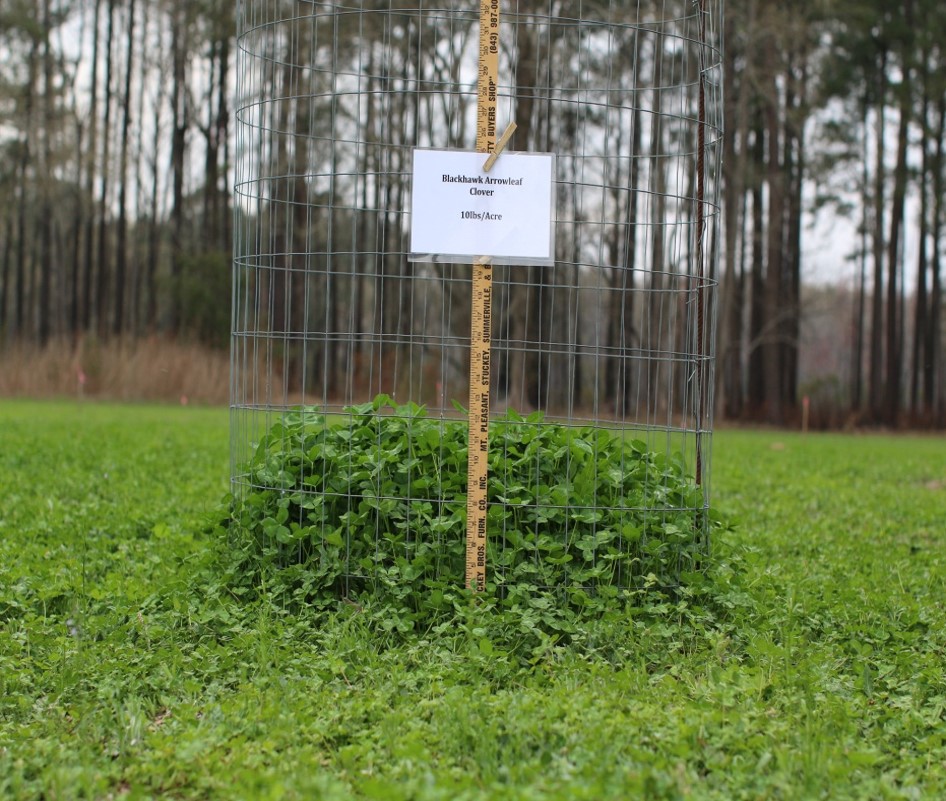Habitat management for wildlife is a popular topic for hunters, landowners and wildlife managers. Food plots can play a key role in managing wildlife on your property, especially white-tailed deer. Planting food plots is a great way to increase and improve available nutrition, concentrate wildlife and increase carrying capacity. While food plots do not replace management practices such as early successional habitat, prescribed fire, and timely timber harvest, they can supplement the naturally occurring food supply on a property.

If you have planted food plots for any length of time, you most likely have experienced a food plot failure. Food plots fail for various reasons, such as too much or too little rain at the wrong time, which is beyond our control. Drought can severely impact seed germination at planting and yield throughout the growing season. While we cannot control the weather, we can avoid mistakes by closely examining some common causes behind food plot failures.
- Soil type matters: One of the most critical and often overlooked components in food plot production is soil type. Think of soil type as the foundation of a building or house on which everything rests. Many food plot species require specific soil types for optimum growth and production. For example, Aeschynomene prefers a fertile, moist soil type with adequate water holding capacity throughout the growing season but does not grow well on sandy, drought-prone soils. For alfalfa, select a well-drained, fertile site that allows for a deep and healthy root system. Both of these forages are excellent food plot species for deer and provide bugging habitat for turkeys and quail, but require slightly different soil types for optimum production. In contrast, Alyce clover and chicory tolerate sandy soil types well.
- Soil fertility and soil pH: The importance of proper liming and fertilization in food plot production cannot be overstated. Scientists have identified 16 essential nutrients required for plant growth and grouped them according to the amount plants require: Primary, secondary nutrients, and micronutrients. Plant growth depends on the amount and form of these elements in the soil. Soil pH directly impacts the availability of these nutrients in the soil. Acidic soils can also negatively impact nodule formation and nitrogen production of legumes. Most legumes require a soil pH of 6.2 to 6.5 for optimum growth, while alfalfa grows best at soil pHs 6.5 or slightly greater. The only way to accurately determine the fertility and pH of a soil is by taking a soil test. Soil sampling is an easy task, but many food plot managers often skip this process.
- Plot prep & planting techniques: Proper seedbed preparation is a key component of successful food plot establishment. How many times have you heard or read the phrase, “Establish in a well-prepared, weed-free seedbed with adequate moisture”? Disking is necessary to incorporate soil amendments like lime, fertilizer & herbicides if applicable, break up large dirt clods, and remove weeds and residue from the soil surface. However, disking can also stimulate weed seed germination and deplete soil moisture during hot weather with limited rainfall. Planting with limited soil moisture and planting too deep are common causes of food plot failure. Small-seed species like clover, alfalfa, brassica, chicory, Alyce clover and aeschynomene germinate better in firmer, well-prepared seedbeds. Large-seeded species like cowpeas, soybeans, Austrian winter pea and small grains will germinate with less soil preparation provided they are covered with soil at recommended seeding depths. Planting seed blends can be challenging due to competition between plant species and different seed sizes that require different planting depths for optimum germination.
- Weed control challenges: One of the most significant problems in growing food plots is weed control. Selecting the appropriate herbicide depends on the specific weeds present and the crops you plan to plant. Weed control options are sometimes few and far between due to the limited number of herbicides labeled for use in wildlife food plots. Controlling weeds is also difficult if you do not know which weeds you are dealing with. Misidentification of weeds leads to poor control, allowing weeds to compete with food plot species for moisture, nutrients and sunlight. Post-emergent herbicides control weeds best when they are small and actively growing. Generally, weeds larger than 3 to 4 inches tall are more likely to survive herbicide application, especially when growing conditions are less than ideal. Herbicide-resistant weeds like Palmer amaranth and ryegrass are becoming more frequent in food plots. Perennial weed species like bermudagrass and Johnsongrass can be especially challenging in perennial food plots. Monoculture, growing the same crop in the same food plot year after year, increases weed, disease and insect pressure. Nematodes can become major causes of yield reduction in monoculture systems without proper crop rotation, making food plot species less competitive with weeds.
- Overgrazing/ browsing: Overconsumption of forages by deer can significantly reduce your food plot’s chances for success, given the high deer population in many areas of the state and the fact that food plots tend to be small in size, resulting in too many mouths to feed and not enough room at the table. Food plot species like cowpeas, soybeans, and buckwheat are commonly overgrazed in small food plots. Warm-season species, including aeschynomene and Alyce clover, tend to withstand heavy browsing pressure better. Cool-season plantings of small grains and clover are options in the fall for small food plots with high grazing pressure. Increasing the size and number of food plots and reducing deer herd density through increased doe harvest offers workable long-term solutions to overgrazed and overbrowsed food plots.
Given all the challenges of successfully growing wildlife food plots, it’s still a popular management practice for hunters, landowners and wildlife managers. With proper planning, attention to detail and a little luck, one can reduce the chances of food plot failure. Contact your local Clemson Extension office for more information on wildlife food plot establishment and management.
Author
Marion Barnes, Cooperative Extension, Agronomy and Natural Resources Agent
Clemson University Cooperative Extension Service offers its programs to people of all ages, regardless of race, color, gender, religion, national origin, disability, political beliefs, sexual orientation, gender identity, marital or family status and is an equal opportunity employer.
